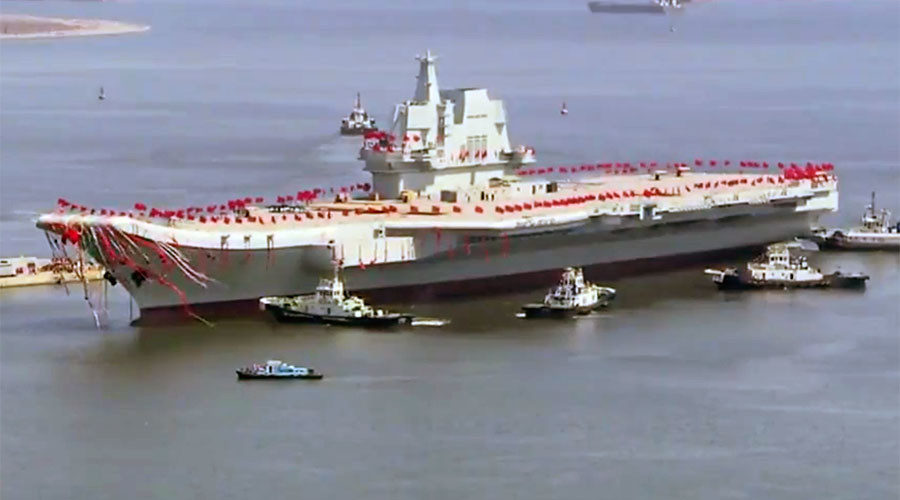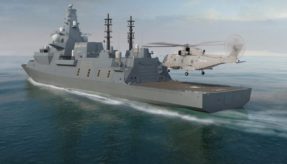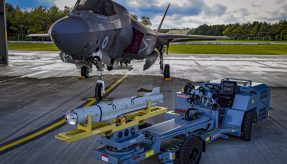
The launch of China’s first domestically built aircraft carrier in late April is certainly a significant milestone in the growth of the People’s Liberation Army Navy (PLAN).
In this article, Anthony Rix, Business Development and Board advisor at MAST, the maritime risk management company, and former Royal Navy Rear Admiral, explores what this might mean to international security and defence.
The new carrier (currently un-named) is of a similar size to aircraft carriers in the US, Russia and the UK; capability and operational effectiveness are more important measures, both of which will take time to judge. But when viewed from an Asia-Pacific regional perspective, it serves to highlight the changes and challenges in maritime terms that are emerging in China and the wider region.
China’s rise as a global economic superpower has been fast and predictable. This has enabled China to build its armed forces at an impressive rate. Military spending in China will increase this year by ‘only’ 7%, after many years when it has increased by over 10%. Significantly there has been a shift in resource allocation from the Chinese army to the navy in the last 25 years and this is reflected in the size and modernisation of the PLA(N). Some have described the growth and modernisation of the PLA(N) as being ‘aggressive’. However one wishes to characterise it, it will enable China to flex its muscles on the world stage in a manner that has not been possible for hundreds, if not thousands, of years.
One relatively small example illustrates this. In 2008 the PLA(N) deployed a Task Group of warships (two destroyers and a replenishment vessel) outside the Asia Pacific area (the first time it has done this for about 400 years), to the Gulf of Aden to combat piracy. While other navies have recently had to deploy their ships away from the Gulf of Aden for higher priority operations the PLA(N) has maintained an almost constant anti-piracy effort there. We can expect to see increasingly frequent deployments of PLA(N) warships within the Asia-Pacific region and beyond for a variety of missions.
Closer to home there is much for the PLA(N) to engage in. Ongoing disputes over sovereignty of the waters of the South and East China Seas will require ongoing effort by the PLA(N) to address, probably for many years. The PLA(N) seems well prepared for this in terms of the number and type of vessels that it operates.
The PLA(N) will also play a major part in maintaining China’s sea lanes through critical areas such as the Malacca Straits and the South China Sea. Almost 40% of China’s current demand for oil passes through Malacca and the South China Sea; this will only continue to grow.
So, what does the growth and modernisation of the PLA(N) mean for other Asia-Pacific regional navies?
The issue that will focus the immediate attention of many other regional navies is, unsurprisingly, that of the South China Sea. Ownership of sea areas brings with it a need to demonstrate ownership and to police sovereign territory. Absent owners (or those who claim ownership) will soon find that someone else has moved in. The PLA(N) has the number and type of warships and other vessels to do this; many of their rivals don’t. So, it is likely (and evident in some navies) that we will see an increase in the size of some regional navies as they seek to somewhat mitigate China’s growing maritime presence. Aircraft carriers are not best suited to the policing of claimed territorial waters around features such as rocks. What is needed are a lot of smaller vessels such as coastguard cutters and corvettes. Quantity wins over quality; and this will need to be supported by wide area surveillance and good training which provides opportunities for international and commercial engagement.
As China was recently launching its new aircraft carrier, the Head of the US Navy, Admiral John Richardson, was commenting that he would like to see more international participation in Freedom of Navigation operations in the South China Sea. This is an issue for international navies to consider in supporting a rules-based environment in the South China Sea. But then we hear that recent requests by the US Navy to conduct Freedom of Navigation patrols in the South China Sea have not been approved by the US administration, presumably to avoid antagonising China.
The Asia-Pacific region presents some fascinating issues for those with interests there. As it stands, China seems to have the initiative.
Images: © Knews24 / YouTube
If you would like to join our community and read more articles like this then please click here
Anthony Rix China China Navy MAST PLA(N) Royal Navy South China Sea








